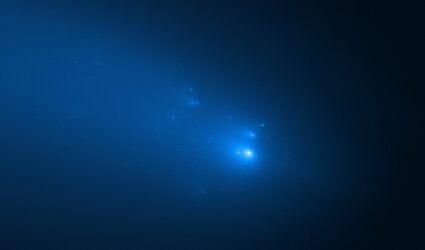Accept all cookies Accept only essential cookies See our Cookie Notice

About ESA
The European Space Agency (ESA) is Europe’s gateway to space. Its mission is to shape the development of Europe’s space capability and ensure that investment in space continues to deliver benefits to the citizens of Europe and the world.
Highlights
ESA - United space in Europe
This is ESA ESA facts Member States & Cooperating States Funding Director General Top management For Member State Delegations European vision European Space Policy ESA & EU Space Councils Responsibility & Sustainability Annual Report Calendar of meetings Corporate newsEstablishments & sites
ESA Headquarters ESA ESTEC ESA ESOC ESA ESRIN ESA EAC ESA ESAC Europe's Spaceport ESA ESEC ESA ECSAT Brussels Office Washington OfficeWorking with ESA
Business with ESA ESA Commercialisation Gateway Law at ESA Careers Cyber resilience at ESA IT at ESA Newsroom Partnerships Merchandising Licence Education Open Space Innovation Platform Integrity and Reporting Administrative Tribunal Health and SafetyMore about ESA
History ESA Historical Archives Exhibitions Publications Art & Culture ESA Merchandise Kids Diversity ESA Brand Centre ESA ChampionsLatest
Space in Member States
Find out more about space activities in our 23 Member States, and understand how ESA works together with their national agencies, institutions and organisations.
Science & Exploration
Exploring our Solar System and unlocking the secrets of the Universe
Go to topicAstronauts
Missions
Juice Euclid Webb Solar Orbiter BepiColombo Gaia ExoMars Cheops Exoplanet missions More missionsActivities
International Space Station Orion service module Gateway Concordia Caves & Pangaea BenefitsLatest
Space Safety
Protecting life and infrastructure on Earth and in orbit
Go to topicAsteroids
Asteroids and Planetary Defence Asteroid danger explained Flyeye telescope: asteroid detection Hera mission: asteroid deflection Near-Earth Object Coordination CentreSpace junk
About space debris Space debris by the numbers Space Environment Report In space refuelling, refurbishing and removingSafety from space
Clean Space ecodesign Zero Debris Technologies Space for Earth Supporting Sustainable DevelopmentLatest
Applications
Using space to benefit citizens and meet future challenges on Earth
Go to topicObserving the Earth
Observing the Earth Future EO Copernicus Meteorology Space for our climate Satellite missionsCommercialisation
ESA Commercialisation Gateway Open Space Innovation Platform Business Incubation ESA Space SolutionsEnabling & Support
Making space accessible and developing the technologies for the future
Go to topicBuilding missions
Space Engineering and Technology Test centre Laboratories Concurrent Design Facility Preparing for the future Shaping the Future Discovery and Preparation Advanced Concepts TeamSpace transportation
Space Transportation Ariane Vega Space Rider Future space transportation Boost! Europe's Spaceport Launches from Europe's Spaceport from 2012Latest

Hubble spots vagabond comet near Jupiter's asteroids
Thank you for liking
You have already liked this page, you can only like it once!
The NASA/ESA Hubble Space Telescope snapped this image of the young comet P/2019 LD2 as it orbits near Jupiter's captured ancient asteroids, which are called Trojans. This icy object is the first comet astronomers have spotted near the Trojan population.
The Hubble view reveals a 640,000-kilometer-long tail of dust and gas flowing from the wayward comet's bright solid nucleus. The tail is evidence that the icy object is active, despite its great distance from the faint Sun. The tail could be driven by the release of carbon monoxide and carbon dioxide. These volatiles do not need much sunlight to heat their frozen form and convert them to gas.
The wayfaring comet was discovered in early June 2019 by the University of Hawaii's Asteroid Terrestrial-impact Last Alert System (ATLAS) telescope.
The icy interloper is most likely one of the latest members of the so-called "bucket brigade" of comets to travel inward toward the Sun after getting kicked out of its frigid home in the Kuiper belt through interactions with the outermost giant planet, Neptune.
Located on the outskirts of our solar system, the Kuiper belt is a haven of icy, leftover debris from our planets' construction 4.6 billion years ago.
The vagabond comet is a temporary resident among Jupiter's asteroids. Computer simulations show that the unexpected guest will have a close encounter with Jupiter in roughly another two years. The massive planet will boot the comet toward the inner solar system.
This Hubble visible-light image is a combination of exposures taken April 1 and May 8, 2020, with the Wide Field Camera 3.
-
CREDIT
NASA, ESA, STScI, B. Bolin (IPAC/Caltech); CC BY 4.0 -
LICENCE
CC BY 4.0 INT or ESA Standard Licence
(content can be used under either licence)

Comet Shoemaker-Levy 9 approaches Jupiter

Hubble observation of Comet ATLAS on 23 April 2020

Twin tail revealed in new Hubble image of Didymos-Di…

Hubble Captures Rare Active Asteroid















 Germany
Germany
 Austria
Austria
 Belgium
Belgium
 Denmark
Denmark
 Spain
Spain
 Estonia
Estonia
 Finland
Finland
 France
France
 Greece
Greece
 Hungary
Hungary
 Ireland
Ireland
 Italy
Italy
 Luxembourg
Luxembourg
 Norway
Norway
 The Netherlands
The Netherlands
 Poland
Poland
 Portugal
Portugal
 Czechia
Czechia
 Romania
Romania
 United Kingdom
United Kingdom
 Slovenia
Slovenia
 Sweden
Sweden
 Switzerland
Switzerland

























